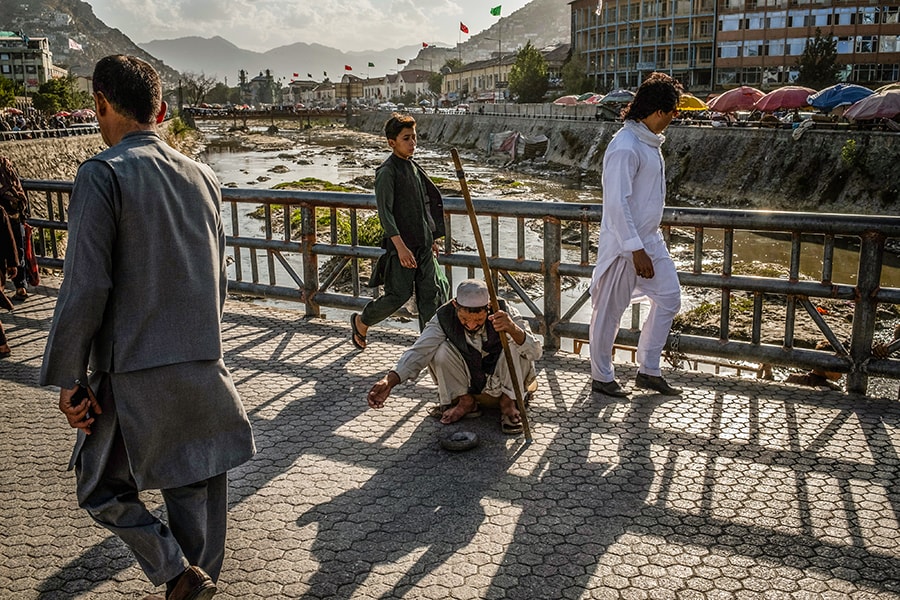
This is the plan to rescue poor countries from the pandemic
Under a proposal nearing completion, the International Monetary Fund would issue $650 billion worth of reserve funds, essentially creating money that troubled countries could use to purchase vaccines, finance health care and pay down debt
 A street beggar in Kabul, Afghanistan, Sept. 2, 2020. Poor countries burdened by debt could gain financial relief from a proposal expected to be advanced by the International Monetary Fund’s executive board on Friday, June 25, 2021.
A street beggar in Kabul, Afghanistan, Sept. 2, 2020. Poor countries burdened by debt could gain financial relief from a proposal expected to be advanced by the International Monetary Fund’s executive board on Friday, June 25, 2021.
Image: Jim Huylebroek/The New York Times
In a global economy defined by extreme forms of inequality, the pandemic has widened the divide. The richest nations in North America and Europe are poised for robust recoveries, having used their wealth to rescue their economies and secure vast stocks of COVID vaccines. Poor countries are confronting the continued ravages of the coronavirus largely unprotected and with their resources strained by growing debts.
Now, fears that the world may emerge from the pandemic more unequal than ever have prompted a substantial effort to close the gap: Under a proposal nearing completion, the International Monetary Fund would issue $650 billion worth of reserve funds, essentially creating money that troubled countries could use to purchase vaccines, finance health care and pay down debt.
Such a step would deliver “potentially the largest capital allocation since the end of World War II,” declared the administrator of the United Nations Development Program, Achim Steiner, during a press briefing this week.
But international development experts say simply creating new reserves would be of limited benefit to poor countries unless wealthy nations voluntarily transfer some of their holdings to them — a course that IMF officials are seeking to bring about.
The IMF’s executive board is expected to advance the proposal during a meeting Friday before forwarding it for final approval to its board of governors, which comprises representatives of the fund’s 190 member nations. Officials hope it will gain final passage by August.
©2019 New York Times News Service




